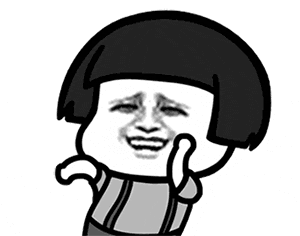
表情包
BIAOQINGBAO
Curated by Yina Shan


Memes are babies of modern internet culture.
Biaoqingbao are Chinese memes.
In 1982, an American computer scientist, Scott Fahlman used the first emoticon.
In 1997, J-Phone (now Softbank) released a mobile phone along with the world’s first known emoji set.

In 2003 QQ (China's default messaging platform at the time) released their emoji series.


Early 2010s. If you don't know..
Likely the parent of biaoqingbao.
End of the history lesson! Yay! Not even sure if it was correct hehe.

表情包 is a current culture which formed after the social software got popular among people. In the age of the mobile Internet, people use the popular superstars, sayings, cartoons, film and television screenshots and so on as the materials, with a series of matching characters to express some specific emotion. Its Chinese name is "表情包", its English name is "emoji". Most of the 表情包 are funny. When people chat on the social software, they use 表情包 to replace the simple characters to amuse the chat. There are some examples.
(I don 't know what are you talking about)
(Don't speak! Kiss me!)
(Are you free tonight?)
(What's the matter, do you refuse to obey me?)
(I really don' t know how to translate the picture ...)
(It's so painful in baby's heart.)
This is my answer. There may be some mistakes in grammar. I hope this can help you to know more about the 表情包.
Thank you so much. #^_^#
Soft spot for Mushroomhead

A lot of biaoqingbaos come from television. Here are some famous inspiring scenes.
Yixin Liang
M.A. University of Pittsburgh, 2017
As one of the trendiest Internet memes in China, Biaoqing Bao has experienced fast development, from the early emoticons used on QQ and Internet images inspired by the rage comics in the late 2000s to a brand new branch of online communication tool around 2015. Biaoqing Bao has its distinctive feature to combine images and texts together to convey users’ emotions and feelings. Various technologies like Biaoqing Bao generators also enable users to draw different sorts of materials, such as social hot issues, to make them into Biaoqing Bao. Biaoqing Bao thus offers a vantage point to look at today’s Chinese pop culture. In this thesis, I will investigate the origin of Biaoqing Bao which can be traced back to 2009 when a new type of images emerged online to vent netizens’ sentiment against the Internet censorship launched by the Chinese government. As the predecessor of Biaoqing Bao, these images served the subversive purpose against the authoritarian manipulation over the cyber space. Although the subversive spirit embodied in Biaoqing Bao seems to subside when Biaoqing Bao has been more and more used on major instant messaging platforms, the creativity in Biaoqing Bao still leaves relatively free space for netizens to fully represent their digital selves and celebrate such liberty of expression. I will also investigate the 2016 Facebook campaign launched by the Chinese mainlanders, to demonstrate that such a subversive symbol plays an important role in constructing a united national identity to participate in the international political dispute. Biaoqing Bao provides a channel to vent the netizens’ anger in a playful way, in contrast to the moderate attitude of the government. In this sense, I argue that Biaoqing Bao, as one of the semiotic codes created and circulated on the Internet, is not only a visual entertainment in communication as a signifier of Chinese pop culture, but also a practice that represents a subversive symbol that strives against any forms of authoritative regulation and manipulation in the Chinese Internet culture.
Not completely related content, but I found a video of Sponge Bob in China.